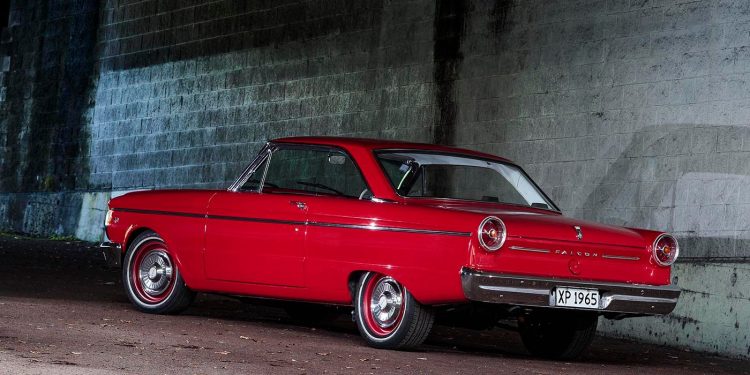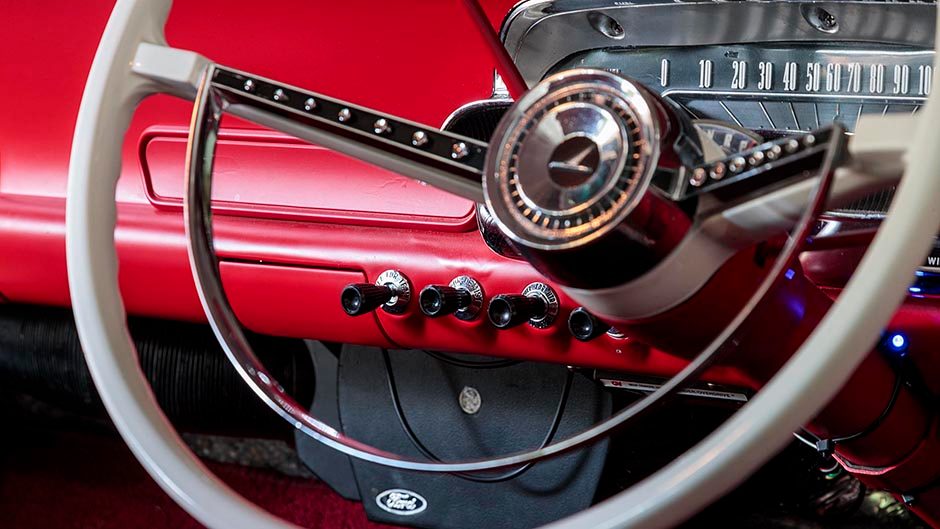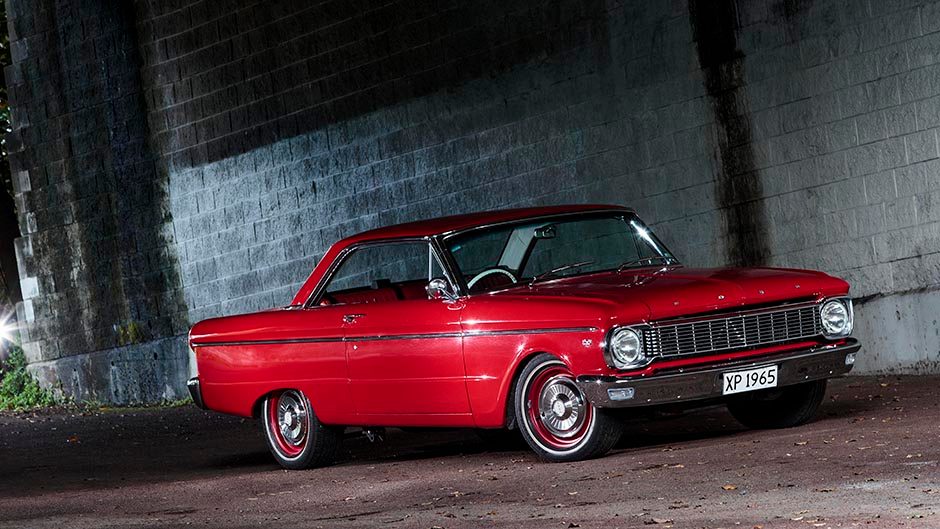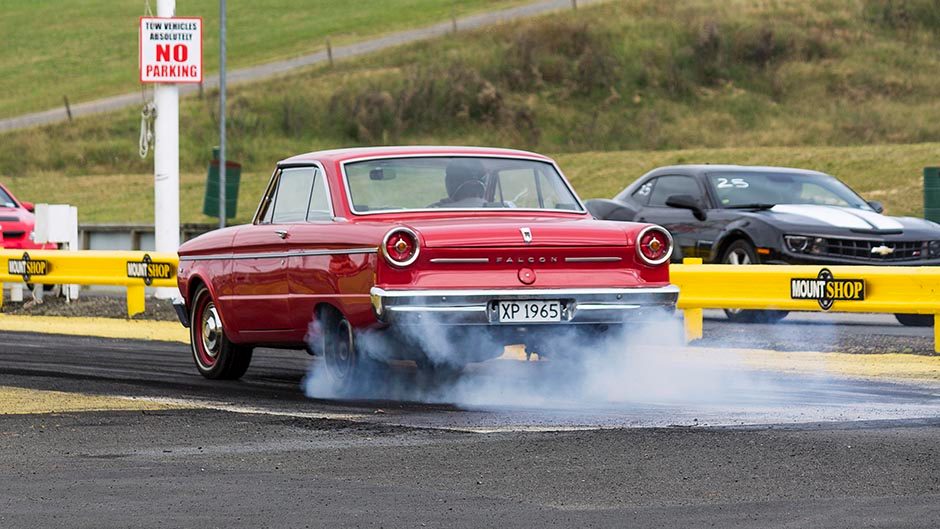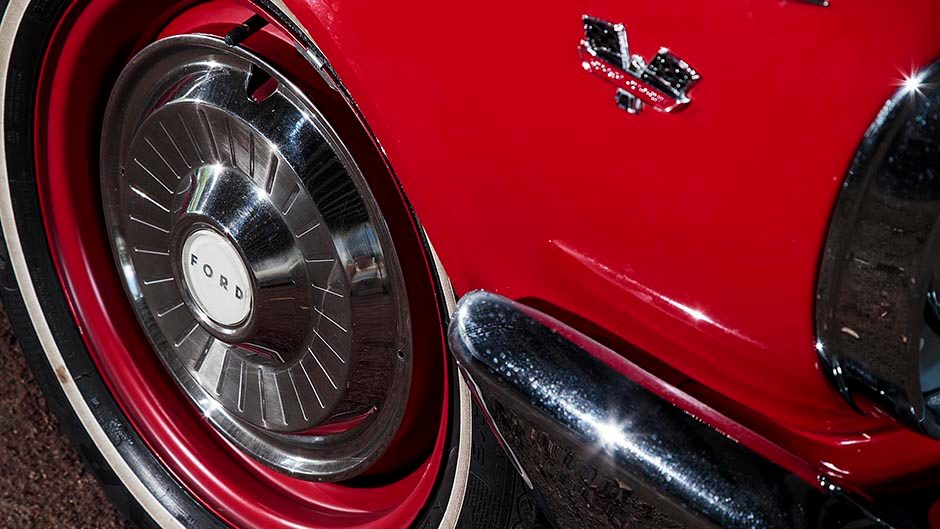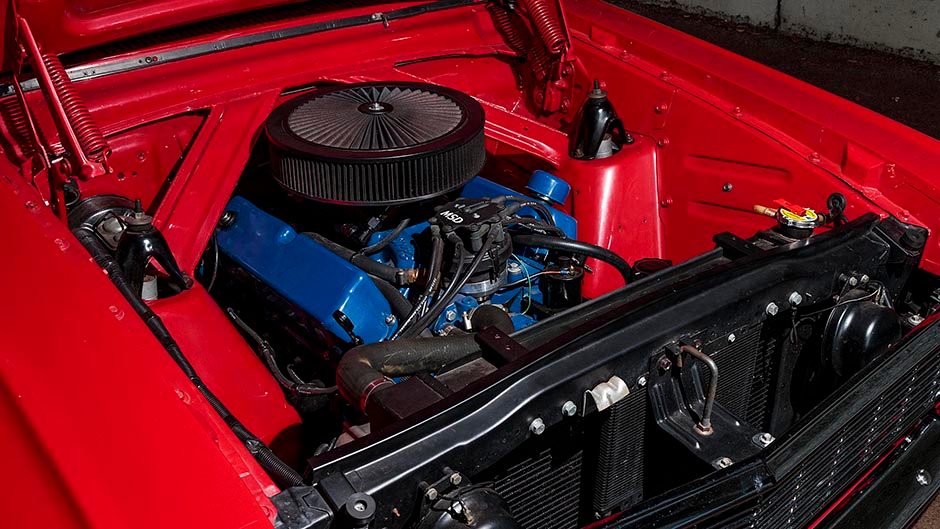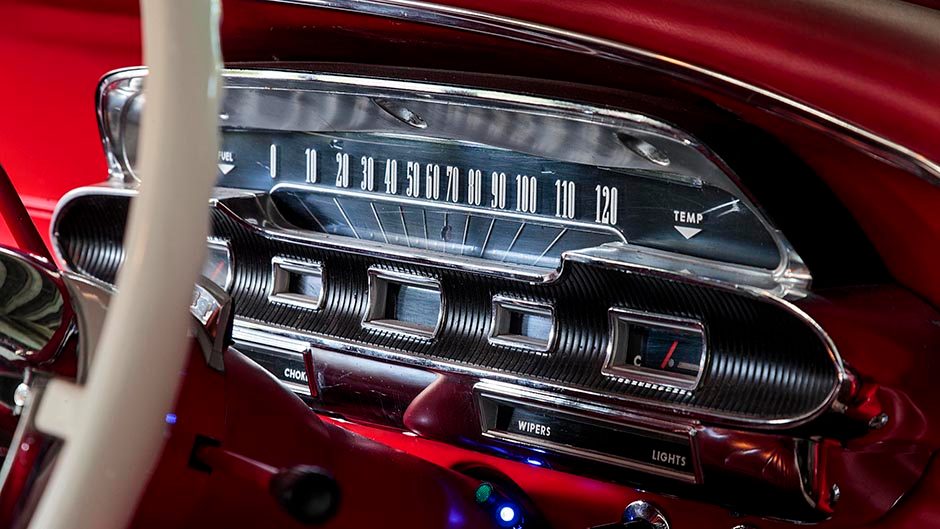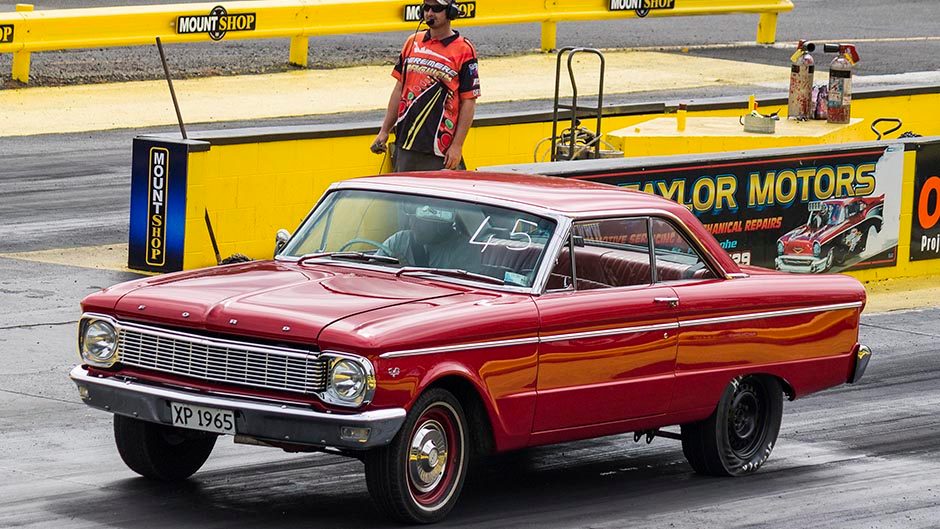1965 Ford XP Falcon
Words Kyle Cassidy | Photos Tom Gasnier
We check out a Ford XP Falcon that lay dormant for two decades before being restored to a factory look while embracing V8 power under the bonnet.
Ford put the Falcon out to pasture last year, no longer a viable option after more than 50 years of continuous service. However, what was to be Ford’s mainstay for many decades almost failed to fly. The XK (launched in 1960) and subsequent XL and XM models were plagued with problems, including poor transmissions, rust and premature suspension failures as the American-designed Falcon proved too soft for the harsher aspects of Aussie life.
The XP came along in March 1965, and would be the last version of the first-generation Falcon. The main change from the XM was the ‘torque frame box’ steel subframe which added structural rigidity to the car, while Ford finally sorted the issues affecting the suspension and brakes. The XP’s styling was more masculine than previous Falcons to convey the strengthening work Ford had undertaken.
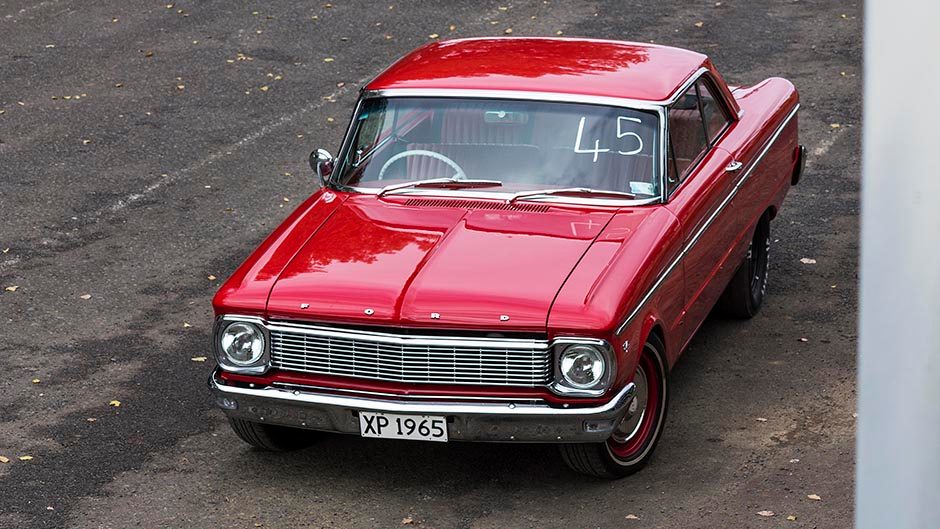
It had also tested the XP to a far greater extent with almost 500,000 verification miles clocked, including the famous 70,000 mile endurance test/PR stunt. With Falcon sales flat-lining, the XP was a make-or-break model for Ford, and to highlight its added reliability and toughness, Ford orchestrated a much publicised torture test, the Falcon-Mobil 70,000-mile Durability Run.
This would require five XP Falcons to clock up a combined 70,000 miles at a 70mph average around the newly built You Yangs test circuit. They would have to run day and night, continuously for nine days. And not on a high speed oval, but a 4.3km durability circuit with twists, off-camber turns and a one-in-four gradient to climb.
The longest straight was just 400m long. The course was designed for cars averaging about 50mph during regular testing, not the 70mph average the XPs would have to maintain. It was a gamble, an all-or-nothing stunt to either save or sink Falcon, and the whole Ford Australia operation with it.
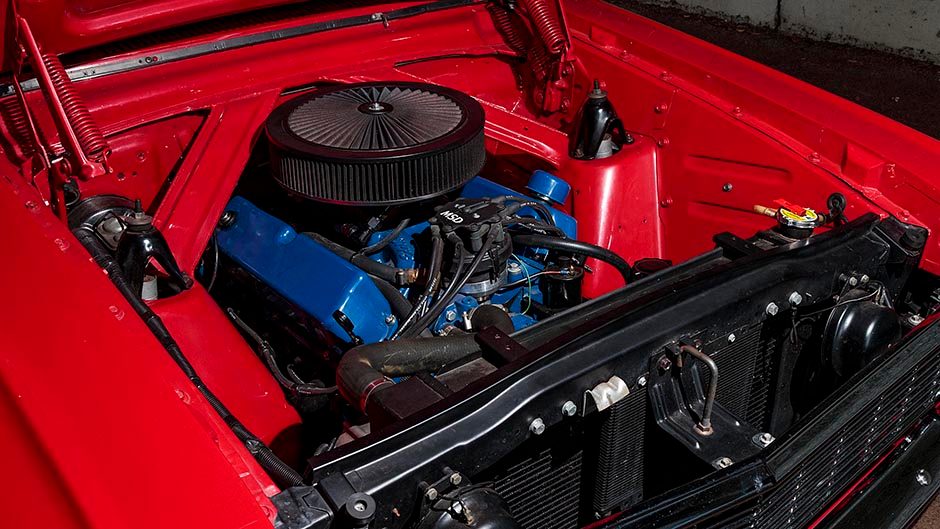
A hardtop and four sedans were used, with a sixth car, a hardtop, held in reserve. A team of top drivers was needed to keep the cars circulating at such a pace, with talented wheelman like Harry Firth, Pete Geoghegan, Bob Jane, Fred Gibson, Allan Moffat and Barry Seton employed to keep the Falcon’s flying. Racers being racers, they pushed the cars harder than necessary at stages and not without incident, all of the XPs sustaining some damage during the trial and several cars were rolled; even the reserve car was upturned.
But men and metal were tough back in the day, and the cars and drivers were patched up and pressed back into service to finish the job. Tyre wear was an issue, chewing through sets faster than anticipated, and Dunlop had to freight every spare tyre they could find in Australia to the track.
But after nine days, the cars had collectively totalled 70,000 miles, the least damaged car, a sedan, managing to cover the most ground, accumulating 14,120miles over the period. The cars were battered after the trial, but Ford claimed none suffered any major mechanical failures.
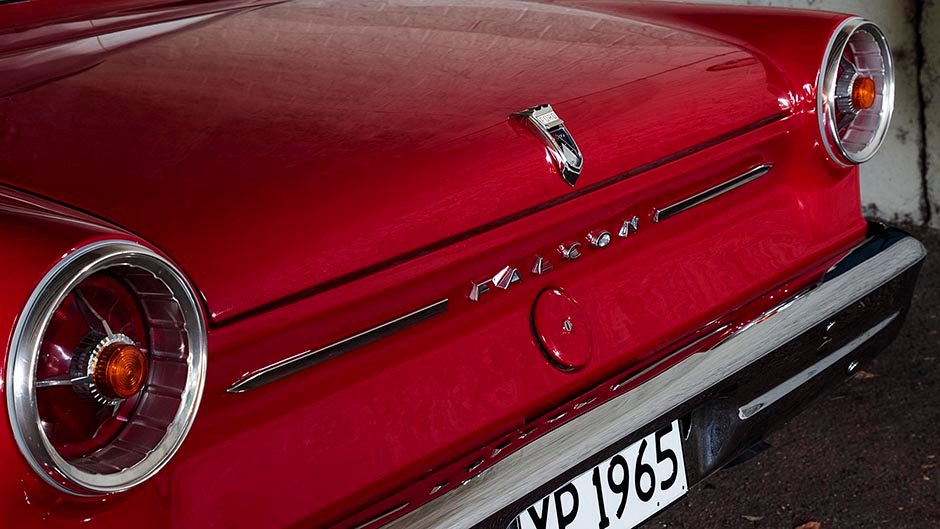
Photos of the bent cars were disseminated all over the country and were said to convey the impression that the XP was unstoppable, and helped dispel the reputation Falcon wasn’t a tough car for the local conditions. It proved a winner; Ford went on to sell 77,000 XP Falcons, and ultimately save the local Ford outpost.
The XP was praised in its day for its ability to do everything well with neat handling, strong brake performance and improved build quality, even a rattle-free cabin. The XP introduced a new three-speed Borg Warner auto which ‘enlivened performance’. Of the XP range, including the sedans, wagons, utes and panel vans, the most desirable were the two-door hardtops, and remain so today.
Like the sedan, the hardtop came with either the 83kW/212Nm 170CID Pursuit straight six, or the Super Pursuit 200CID (3.3-litres) with 90kW and 237Nm of torque. The standing quarter for a Super Pursuit with the two-speed Fordomatic was 18.6sec. This XP hardtop has improved some on that performance. The XP was never offered with a V8 from the factory but owners were quick to re-engine these with the 260 and 289 V8s in the sixties. Decades later V8 power is still being employed to invigorate XP hardtops.
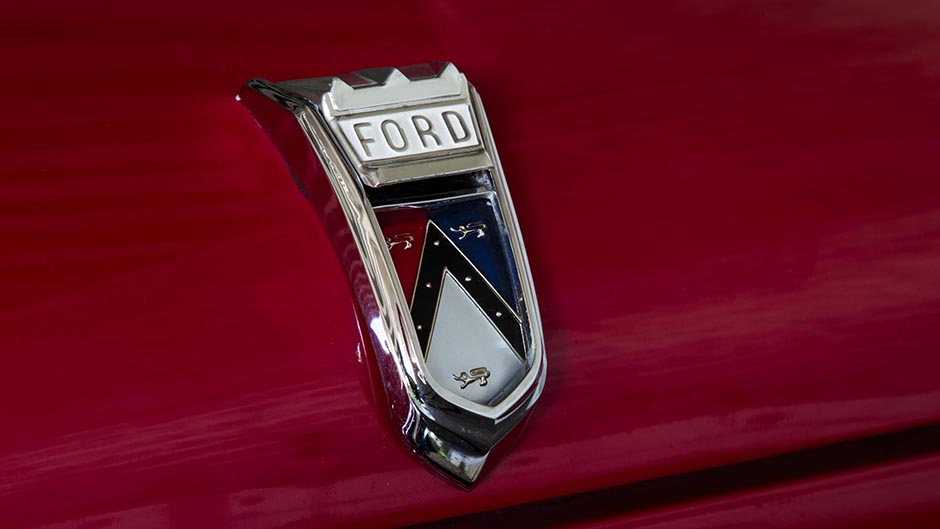
This XP has been with its current owner since he bought it in 1989, for the grand total of $5100. This Deluxe Hardtop was first registered 15th October 1965 in Pukekohe and is now with its 10th custodian. Originally it was powered by the 170 Pursuit engine, with a three-speed manual, but improvement plans were hatched in 1991, the engine and gearbox tossed out, interior gutted and panels removed, ready for the big resto, only for life, business and family to intervene.
The XP sat out the nineties and most of the 2000s under covers, moved around various garages and workshops before a request from a family member to get the car back on the road for a wedding saw its rebirth start. With panels straightened, and recovered in its original red hue, the plan was to keep the XP looking stock both inside and out while underneath there’s nothing much left of the original car.
The interior is trimmed in all period-correct Ford materials from the headlining to the seats, to the padded dash. And most everything is present and working; the two-stage wipers, heater and ventilator, all the mod cons from the mid-sixties. Up front is a 360CID V8, built by David Moyle at Prostreet Automotive using a Dart Windsor block, AFR cylinder heads, lightweighted internals to let it rev freely and breathing through a 750cfm four-barrel carb.
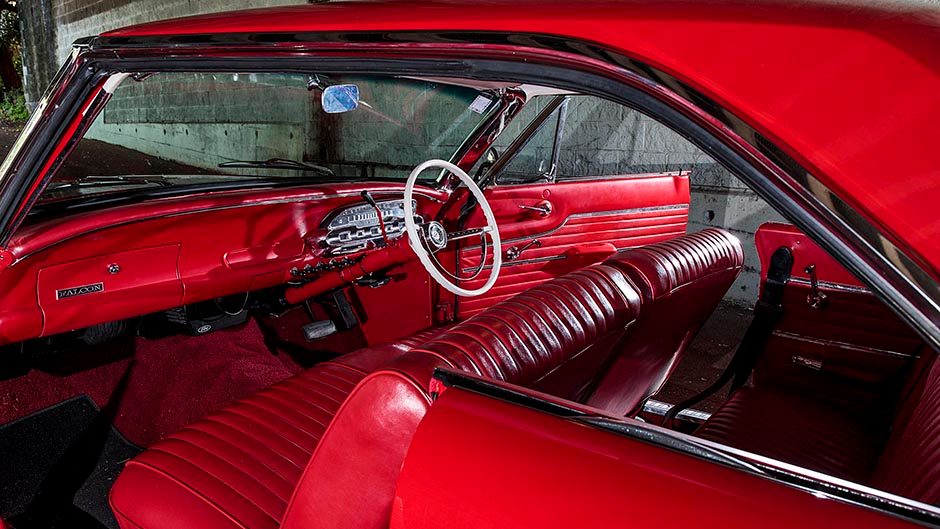
While it hasn’t been on the dyno, there should be “300hp easy”, and it helps the XP complete the quarter in 13.4sec. It runs through a C4 transmission, but with the addition of a Gear Vendor overdrive unit, there are now effectively six ratios with four relatively close gears, one direct and an overdrive. The upshifts are snappy, and the overdrive unit helps keep the V8 lively. This drives a Ford nine-inch with a 3.7:1 ratio, while the leaf springs and shocks holding the diff in place are helped by Caltracs traction bars to better ground the power when launching. The wheels are 16-inch steelies to allow for the fitment of larger Mustang-sourced front discs while the old 14-inch hub caps help preserve the period look.
Power steering is a recent addition, still with the usual recirculating ball steering box, but powered to take the arm work out of the overgeared steering. Used for regular outings and the odd day at the drags, the XP has seen much more daylight in the past five years than the last two decades combined.
What’s next? The engine has been built to withstand a shot of nitrous, but the owner’s not so sure. However, the lure of 12-second runs may change all that.


